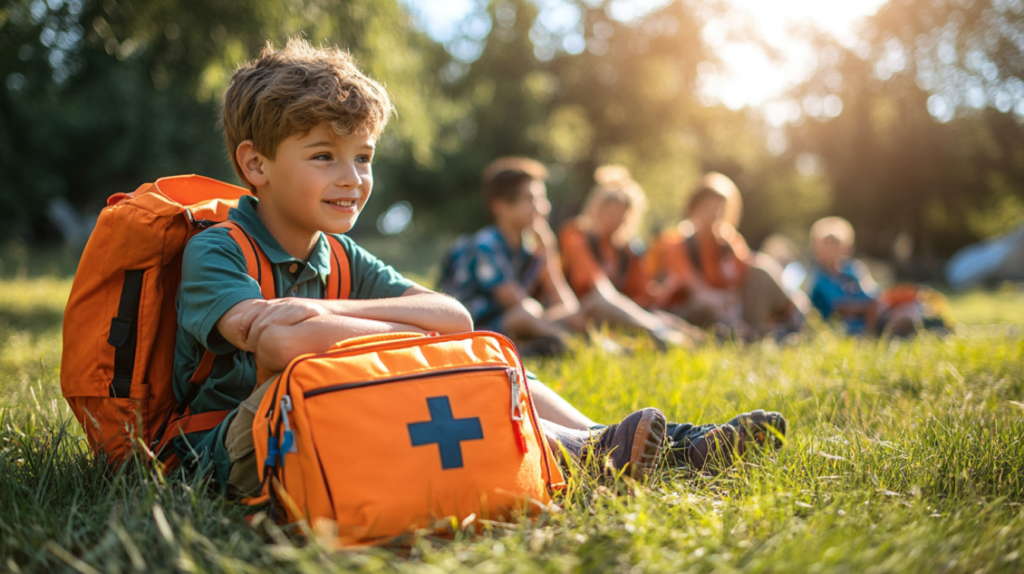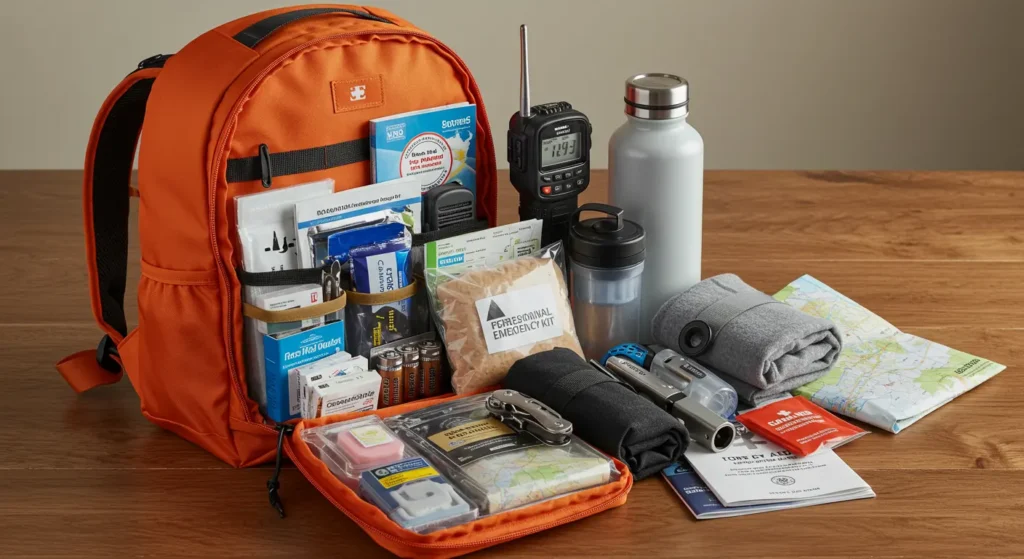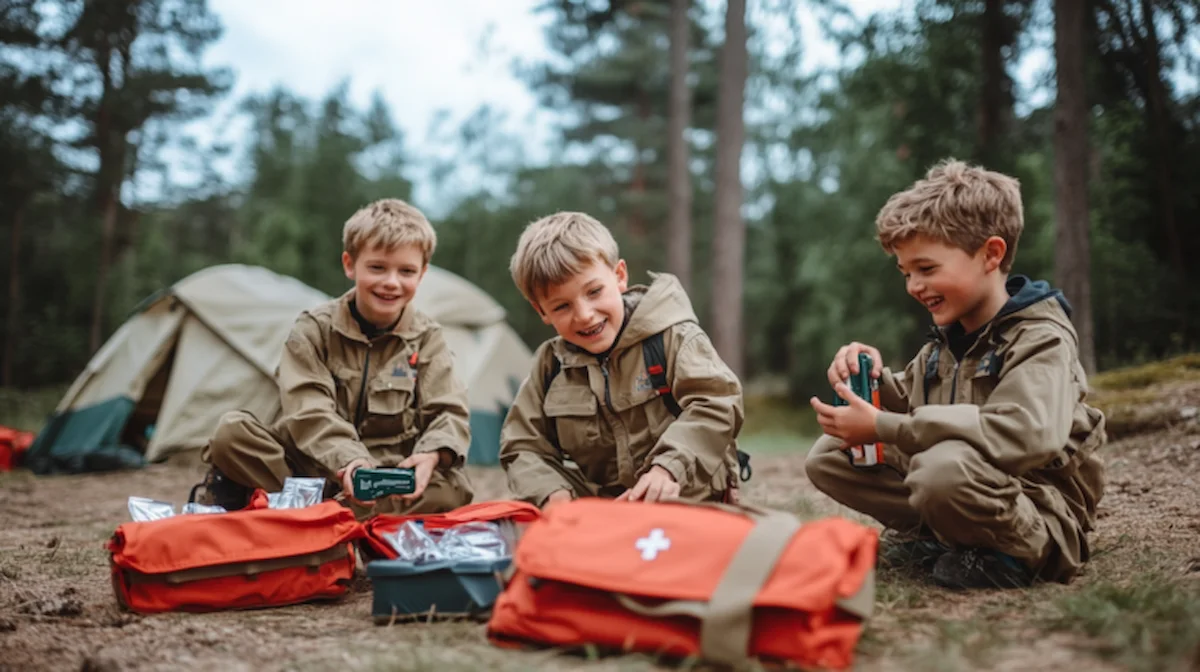Emergencies can happen anytime, and one of the best ways to prepare kids is through programs like the Cub Scout Emergency Preparedness Award. This award isn’t just another badge—it’s a valuable learning experience that teaches young Scouts how to stay safe, respond calmly, and help others during real-life emergencies.
Whether you’re a parent, den leader, or new to the world of Scouting, understanding the Cub Scout Emergency Preparedness Award is key to guiding your Scout on this important journey. From learning first aid and creating a family emergency plan to participating in community safety events, this award equips children with skills that last a lifetime.
In this article, we’ll break down everything you need to know about the Cub Scout Emergency Preparedness Award—what it is, why it matters, and how your child can earn it step by step. Let’s dive into the tools, activities, and resources that make this award one of the most meaningful achievements in Cub Scouting.
What Is the Cub Scout Emergency Preparedness Award?

The Cub Scout Emergency Preparedness Award is a special recognition offered by the Boy Scouts of America (BSA) to help young Scouts learn how to react in emergency situations. This award encourages Cub Scouts to develop safety skills, gain awareness of potential hazards, and take action to protect themselves and others during unexpected events. It plays a vital role in teaching emergency preparedness for kids in a hands-on and age-appropriate way.
Unlike standard Cub Scout badges, the cub scout emergency preparedness award focuses on real-world readiness. Scouts learn practical skills like first aid, evacuation planning, and how to build a basic emergency kit—skills that can make a real difference in times of crisis.
Here are some examples of what the cub scout emergency preparedness award includes:
✅Key Components of the Cub Scout Emergency Preparedness Award
- 📦 Create a Personal Emergency Kit
Scouts collect and organize essential supplies like water, flashlights, bandages, and snacks in a small backpack or box. This hands-on activity makes learning fun and memorable.

- 📍 Practice a Family Emergency Plan
Cub Scouts learn how to plan escape routes and identify safe meeting places with their family. This activity builds confidence and encourages teamwork. - 🧑⚕️ Learn Basic First Aid Skills
Scouts are introduced to first aid for common injuries—scrapes, cuts, burns—through games, posters, and toy doctor kits to make learning engaging. - Visit a Local Fire Department or Invite a Guest Speaker
Packs can arrange for a firefighter or emergency responder to talk about safety tips and real-life experiences. This brings the cub scout emergency preparedness award to life. - 🎲 Use Games and Role-Play Activities
Role-playing fire drills, stop-drop-roll, and storm shelter plans help Cub Scouts remember what to do in a crisis—while having fun in the process.
The cub scout emergency preparedness award is more than a patch—it’s a foundation for lifelong safety awareness. Through guided activities, interactive lessons, and parental support, your Cub Scout will gain the confidence and skills needed to face emergencies with courage and clarity.
Requirements for Earning the Emergency Preparedness Award
The Cub Scout Emergency Preparedness Award has a clear goal: to equip young Scouts with the skills, knowledge, and confidence to respond effectively in emergency situations. Earning this award involves completing specific safety-focused tasks and participating in meaningful activities that prepare Scouts for real-life challenges. These requirements are designed to be both educational and engaging, making them ideal for Cub Scouts at various ranks.
Whether your child is a Tiger, Wolf, Bear, or Webelos, the cub scout emergency preparedness award requirements are tailored to their age level and learning capacity. Most of the requirements can be completed at home, during den meetings, or in collaboration with community safety partners.
Here are the key requirements your Scout must complete to earn the cub scout emergency preparedness award:
Key Award Requirements
- Build a Basic Emergency Supply Kit
Scouts gather and organize essential items such as water bottles, flashlights, batteries, whistles, and non-perishable snacks. You can make it fun by letting them decorate their kit with Scout-themed stickers or store the items in a colorful, labeled box or toy backpack.

- Create and Practice a Family Emergency Plan
This includes drawing a floor plan of the home, identifying exit routes, and choosing a safe family meeting place. Parents are encouraged to act out emergency drills to make the experience memorable and realistic. - Learn Basic First Aid Skills
Scouts are introduced to simple first aid techniques using kid-friendly resources. Using toy doctor kits, bandages, and role-playing games helps them remember how to respond to cuts, scrapes, and burns. - Participate in a Safety Event or Community Activity
To complete the cub scout emergency preparedness award, Scouts should attend a local safety fair, visit a fire station, or take part in a community emergency drill. These real-world experiences help reinforce the importance of preparedness. - Understand the Role of Emergency Professionals
Scouts learn about the responsibilities of firefighters, police officers, EMTs, and disaster response teams. Watching age-appropriate videos or inviting a guest speaker to a den meeting are excellent ways to meet this requirement.
The cub scout emergency preparedness award requirements are meant to build awareness in a fun, interactive way. Parents and leaders play a key role in supporting Scouts as they complete each step. With encouragement, simple tools, and age-appropriate activities, your Scout will gain essential skills that will serve them for life.
Fun and Practical Emergency Preparedness Activities for Cubs
Preparing for emergencies doesn’t have to be boring or intimidating—especially for Cub Scouts. To make the journey toward the Cub Scout Emergency Preparedness Award both educational and enjoyable, it’s important to integrate hands-on, practical activities that kids will love. These fun exercises help Scouts learn real-world skills while building confidence, leadership, and teamwork—all essential for earning the cub scout emergency preparedness award.
From imaginative role-playing to DIY safety kits, the following activities are designed to be age-appropriate, engaging, and easy to implement at home or during den meetings. They not only fulfill award requirements but also make emergency readiness fun and memorable.
Engaging Activity Ideas for the Cub Scout Emergency Preparedness Award
- Create a Personal Emergency Kit Challenge
Turn this requirement into a fun scavenger hunt! Give Scouts a list of items to find around the house—flashlights, bandages, snacks, water, and more. Encourage them to store their kit in a decorated box or a themed toy backpack labeled “Emergency Kit.” - Emergency Role-Play Scenarios
Let Scouts act out different emergency situations like a house fire, a storm, or a power outage. Assign roles such as “emergency leader,” “first aider,” or “navigator.” Use props like walkie-talkies, whistles, and flashlights to bring the scenario to life. These role-plays are excellent for reinforcing safety habits in a fun way. - Build a Family Escape Map with LEGO or Blocks
Ask Scouts to use LEGO bricks or building blocks to design a model of their home. Then, have them identify escape routes and label “safe zones.” This hands-on activity supports both spatial thinking and emergency planning—perfect for working toward the cub scout emergency preparedness award. - First Aid Toy Station
Set up a “first aid station” with toy doctor kits, stuffed animals, and bandages. Have Scouts practice treating minor injuries on their plush “patients.” It’s a lighthearted yet educational way to learn first aid basics. - Storm Drill Obstacle Course
Create a simple obstacle course that simulates a home emergency. Include tasks like crawling under a “smoke” tunnel (blanket), turning off a fake light switch, or grabbing an emergency kit. Time each Scout and reward them with small tokens or stickers. - Invite a Community Hero
Organize a guest visit from a firefighter, EMT, or police officer to talk about safety and emergency response. Let Scouts ask questions and even explore real gear or vehicles if available. These experiences leave a lasting impact and help complete activities for the cub scout emergency preparedness award.
By blending safety education with creativity and play, these activities make earning the cub scout emergency preparedness award something Scouts look forward to. They also encourage families and leaders to get involved, turning safety lessons into lasting life skills.
Resources to Help Scouts Prepare for Emergencies
To successfully earn the Cub Scout Emergency Preparedness Award, Scouts need more than just activities—they need access to the right tools, guidance, and information. Fortunately, there are plenty of helpful resources available for both parents and leaders to make emergency preparedness both educational and fun. These resources not only support award requirements but also encourage Scouts to think critically and take action during real emergencies.
Using a mix of digital tools, printable worksheets, toys, and expert-approved websites, you can create an effective and engaging learning experience. Below are some of the top resources to help your Scout get ready for the cub scout emergency preparedness award.
Helpful Resources and Tools for the Cub Scout Emergency Preparedness Award
- FEMA’s Ready.gov Kids Program
FEMA offers free emergency preparedness materials specifically designed for children. The “Ready Kids” section includes interactive games, checklists, and planning tools that align well with the cub scout emergency preparedness award. It helps Scouts learn how to prepare for natural disasters like floods, wildfires, and storms. - American Red Cross First Aid App
This kid-friendly mobile app is packed with short videos, quizzes, and first aid guides. Parents can explore the content with their Scout to practice essential skills required for the award. It’s an ideal tool to reinforce lessons learned during den meetings. - Printable Emergency Worksheets and Family Plan Templates
Provide Scouts with fill-in-the-blank worksheets to create their own emergency plans. These printables can be decorated and stored in their emergency kits. You can also find coloring pages and matching games related to fire safety and first aid. - Educational Toys and Kits
- Toy first aid kits: Help Scouts learn how to treat minor injuries using practice tools and bandages.
- Emergency-themed board games: Games like “Disaster Hero” or safety trivia cards make learning fun and memorable.
- Walkie-talkies or toy radios: Useful for practicing communication during pretend drills and scenarios.
- YouTube Channels with Scout-Friendly Safety Videos
Short videos featuring emergency drills, weather safety tips, or visits to fire stations are great visual tools. Make sure to choose age-appropriate channels with positive messaging that supports the learning objectives of the cub scout emergency preparedness award. - Local Resources and Community Events
Check with your local fire department, Red Cross chapter, or emergency services to see if they offer youth safety events. These real-life experiences can be powerful additions to your Scout’s emergency education.
By combining these trusted resources with guided learning, Scouts will be well-equipped to earn the cub scout emergency preparedness award and build lifelong safety skills. Leaders and parents can tailor these tools to suit different learning styles, making preparedness a shared family and pack goal.
Tips for Parents and Leaders Supporting the Award Journey
Earning the Cub Scout Emergency Preparedness Award is not just a solo achievement—it’s a team effort involving supportive parents, engaged den leaders, and an encouraging pack environment. Whether you’re guiding your own child or mentoring a group, the right support can make the journey both meaningful and enjoyable.
Because the cub scout emergency preparedness award requires consistent practice, thoughtful guidance, and age-appropriate instruction, your involvement is key to helping Scouts stay motivated and succeed. Below are smart, actionable tips to help adults make the most of this learning experience.
Practical Tips for Guiding Scouts Toward the Cub Scout Emergency Preparedness Award
- Introduce the Award During a Pack or Den Meeting
Set the stage by explaining the purpose of the cub scout emergency preparedness award and why emergency readiness matters. Use visual aids like posters, props, or emergency toys (e.g., toy first aid kits or helmets) to grab Scouts’ attention. - Break Down Requirements into Weekly Activities
Spread the award requirements over several weeks or meetings. For example, Week 1 could focus on building a home escape plan, Week 2 on basic first aid, and so on. This pacing keeps Scouts engaged and makes learning more digestible. - Make Learning Interactive and Hands-On
Kids learn best through play. Use interactive games, storytelling, or role-play toys like doctor kits, firefighter costumes, or radios to simulate emergency drills. These tools make the cub scout emergency preparedness award activities more memorable and fun. - Create a Progress Chart or Sticker Board
Visual trackers help Scouts see their accomplishments. Reward each completed activity with a sticker or token. This not only adds excitement but also encourages Scouts to stay on track. - Invite Guest Speakers for a Real-World Connection
Coordinate a visit from a local EMT, firefighter, or police officer to talk about their role in emergencies. These guest speakers add authenticity and often inspire Scouts to take their learning seriously. - Involve the Whole Family
Encourage parents to complete parts of the award at home, such as building an emergency kit or practicing fire drills. This reinforces safety habits beyond Scouting and helps Scouts connect the award to everyday life. - Celebrate Completion With Recognition
When a Scout earns the cub scout emergency preparedness award, recognize their achievement with a small ceremony or shout-out at a pack event. Consider giving them a printed certificate, patch, or a small survival-themed toy as a keepsake.
With consistent guidance and creative support, parents and leaders can turn the cub scout emergency preparedness award into a fun and impactful journey. It’s not just about checking boxes—it’s about preparing Scouts with knowledge and confidence that will benefit them for life.
Quick Recap: Proven Steps to Help Your Scout Earn the Award
If you’re helping your child or den earn the Cub Scout Emergency Preparedness Award, here’s a quick summary of the proven steps covered in this guide:
- ✅ Introduce the Award at a pack or den meeting to build excitement.
- ✅ Break Down the Requirements into fun, manageable weekly activities.
- ✅ Practice Hands-On Skills like first aid, evacuation planning, and safety drills.
- ✅ Use Engaging Tools and Toys such as emergency kits, role-play gear, and safety games.
- ✅ Leverage Trusted Resources from FEMA, Red Cross, and local emergency responders.
- ✅ Track Progress using sticker charts or reward systems to keep Scouts motivated.
- ✅ Celebrate the Achievement with a recognition ceremony or small gift.
By following these practical and proven steps, your Scout will be well on their way to earning the cub scout emergency preparedness award with confidence and enthusiasm.
Conclusion
The Cub Scout Emergency Preparedness Award is more than just another badge—it’s a meaningful milestone that helps Scouts build essential life skills, boost confidence, and learn how to respond in real emergencies. From creating family safety plans to practicing first aid with fun, hands-on activities, every step of earning the cub scout emergency preparedness award helps shape a more prepared, responsible, and empowered young Scout.
Whether you’re a parent, den leader, or someone new to the world of Scouting, guiding your Scout through the cub scout emergency preparedness award is a rewarding journey for everyone involved. With the right resources, engaging activities, and community support, your Scout will not only earn this important award but also gain skills that could one day save lives.
Ready to get started? Explore the requirements, gather your materials, and support your Scout in earning the cub scout emergency preparedness award today—because preparedness begins with knowledge, action, and heart.


